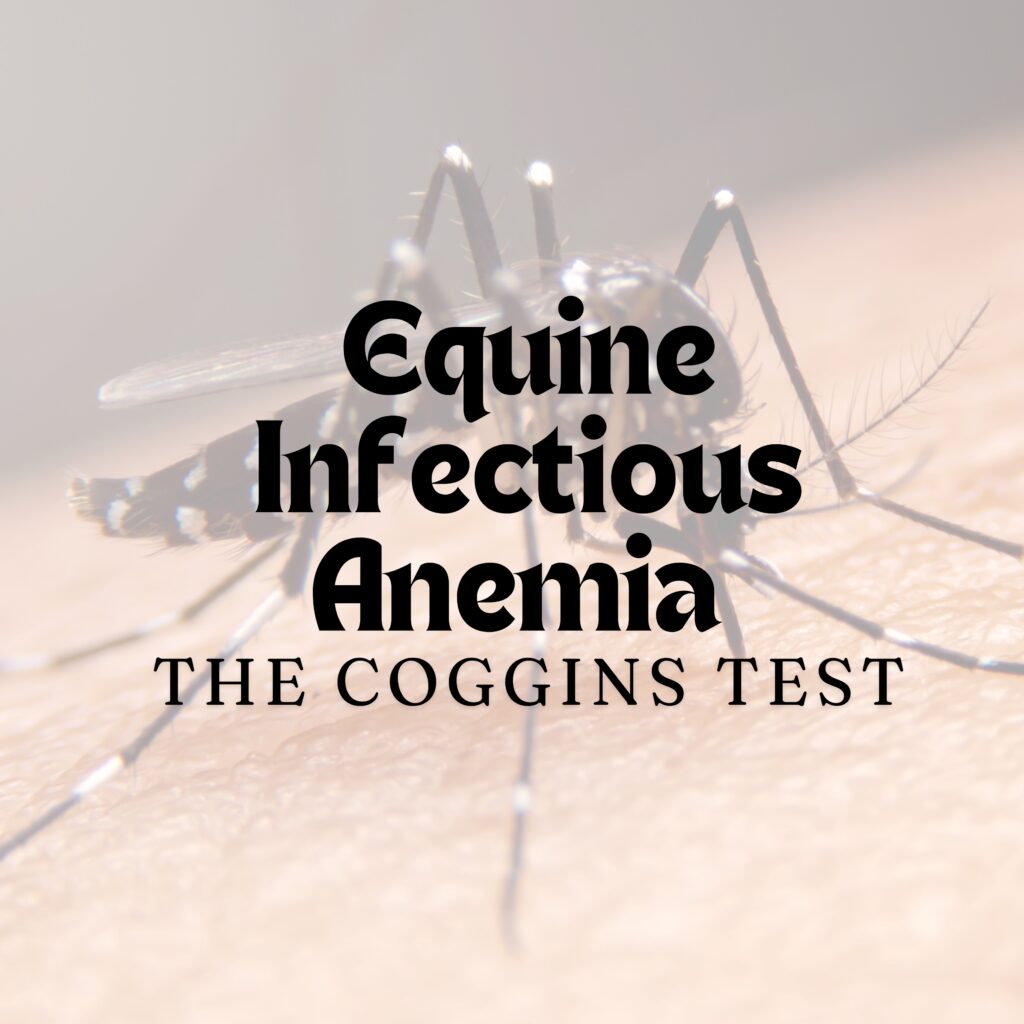Equine Infectious Anemia (EIA)

What is EIA?
Equine Infectious Anemia (EIA),sometimes called ‘swamp fever’ is an infectious disease that causes acute, chronic or symptomless illness, characterized by fever, anemia, swelling and weight loss in horses, ponies, mules and donkeys. The cause is a Lentivirus (a ‘family’ of virus that includes the human immunodeficiency i.e., HIV virus), that is typically transmitted by biting insects in low-lying ‘swampy’ areas.
Although the disease has been recorded from all over the world, the incidence varies markedly from country to country. Early in the twentieth century serious outbreaks occurred in France, Japan and America. The disease is considered endemic in the southeast US, in northwest Alberta and sporadic in other areas of North America.
During the decade 1980 to 1989 the disease was reported in many parts of the Americas, Asia (India, Malaysia, Myanmar, Philippines, Thailand), Europe (Austria, France, Greece, Italy, Romania, USSR and Yugoslavia) and Australia.
What is the incubation period?
The incubation period is normally 1-3 weeks, but appears to be highly variable and may be as long as 3 months. Antibodies usually develop in infected horse blood 7-14 days after infection and last for life.
What are the clinical signs?
The disease is characterized by recurrent febrile episodes, anemia (low red blood cell count), thrombocytopenia (low blood platelet count), inappetance, depression, rapid loss of weight and edema (fluid swelling) of the lower parts of the body, and sometimes incoordination. Early in the disease the membranes of the mouth nostrils and eyes may be swollen and reddened but as the disease becomes chronic, yellow discoloration (jaundice) of the mucous membranes (e.g., mouth and eyes) will develop with small hemorrhages (petechiae) sometimes scattered over their surfaces. Some cases become recumbent and die after the initial stage of the disease. In most however there is a period of apparent recovery, that may last for two or three weeks, but symptoms then reappear and again every few weeks for many months. Recurrently affected horses become progressively weaker, emaciated and jaundiced. Swelling (edema) of the limbs, abdomen and sheath develops (ventral edema). Some pregnant mares may abort. In many cases the heart and kidneys become irreparably damaged and the horse dies. Approximately 50% of all affected animals die. In others, apparent recovery occurs although the virus is never cleared from the body. Some infected horses remain symptomless, although remaining potential sources of infection for uninfected horses.
How is the infection transmitted?
Transmission occurs by transfer of blood from an infected to an uninfected horse. This is achieved naturally via bloodsucking horseflies or mosquitoes. The virus does not multiply in the insect but is passed from one horse to another mechanically as the insect feeds. The disease is mostly seen in the warmer months and in areas where insect populations are high. This includes wooded areas and areas near marshes and streams or where the soil is sandy.
Infected blood can also be transmitted by veterinary procedures, e.g., using contaminated hypodermic needles, stomach tubes, dental and tattooing equipment, or rectal sleeves. These risks can be avoided by single-use disposable needles and rectal sleeves and by washing and disinfecting stomach tubes and dental equipment between horses.

Infection can spread from a mare to her foal either in utero, i.e., before birth or via her milk, i.e., after birth. Foals born to infected mares but who were not infected in utero may be resistant to infection when very young due to the presence of antibodies ingested in colostrum from the mare. Such foals may then be infected by their mothers’ infected milk when colostral antibody levels fall at 3-4 months of age.
Infected horses, whether showing symptoms or not, remain chronically infected with EIA virus and their blood remains infectious to other horses for the remainder of their lives. This means that the horse is a persistent viremic carrier and can potentially transmit the infection to other horses. The virus titer (blood antibody level) is higher in horses with clinical signs and the risk of transmission is higher from these animals than from carriers with a lower virus titer.
How is the diagnosis confirmed?
The diagnosis is initially based on clinical signs of recurrent fever, anemia, jaundice and swelling. It is then confirmed by the demonstration of antibodies to the virus in blood samples or the demonstration of virus particles in affected tissues following post mortem examination. The internationally-recognized blood test is called the Coggins test, after the virologist who first developed it. This test involves an agar gel immunodiffusion reaction and detects antibodies produced by the horse after infection with the EIA virus. A positive result indicates previous or current infection with the EIA virus. An exception (‘false Coggins positive’) occurs where a young foal has been born uninfected (see above) but acquires antibodies from its infected mother, via her colostrum. These foals (if not subsequently infected by infected milk) will usually become ‘Coggins negative’ by six months of age. A false negative result can occur if an infected horse is tested too soon after first infection i.e., before the horse has had time to react immunologically and produce antibodies to the virus.
An alternative to the Coggins test is the C-ELISA test. There is also a test for virus particles in infected tissue but this is most useful if a horse has died after a short period of time and before a Coggins test will give a positive result. Other tests for detecting antibodies in the blood are available but are not as reliable, practical or universally-recognized as the Coggins test.
Mandatory testing has been implemented in Louisiana, Texas and Arkansas to decrease the prevalence of the disease in these endemic states.
What treatment or control measures are used for EIA?
There is no specific treatment available for EIA nor is there a vaccine. Symptomatic and supportive treatments for fever, anemia and weight loss are applied on welfare grounds, at least until a positive diagnosis and the decision for euthanasia are made. Control is based on blood testing to detect infected horses and carriers and euthanasia or strict isolation of these individuals in insect-secure stables. Preventive measures for high-risk situations include the use of insect repellents and insect-secure stabling during times of the day when insects are most active. Veterinarians must use single-use disposable needles and syringes and strict disinfection of all instruments and equipment, that might become contaminated with blood, between animals.
The virus can survive in blood and dried feces and tissues so all of this organic matter should be cleaned away before disinfection either by boiling (for at least 15 minutes) or the use of chemicals such as hypochlorite, iodine compounds, chlorhexidine and ethanol.
Contributors: Deidre M. Carson, BVSc, MRCVS & Sidney W. Ricketts, LVO, BSc, BVSc, DESM, DipECEIM, FRCPath, FRCVS.
Edited by Kim McGurrin BSc DVM DVSc Diplomate ACVIM
© Copyright 2010 Lifelearn Inc. Used and/or modified with permission under license.

